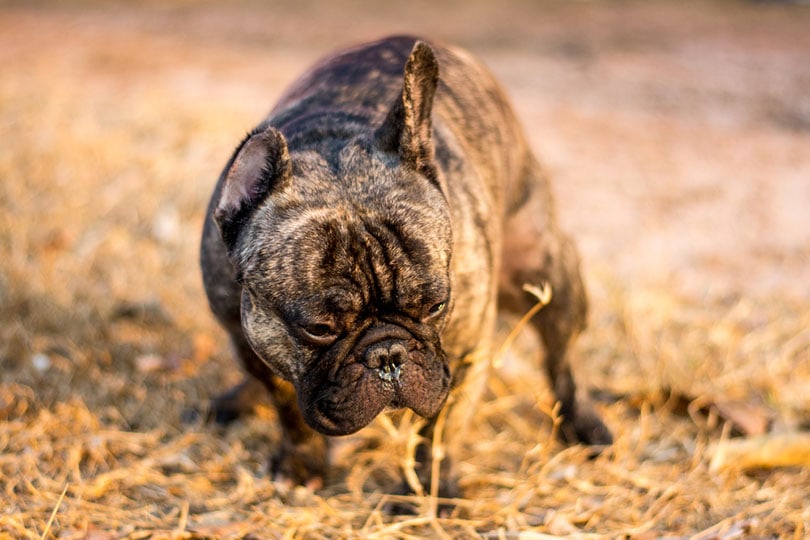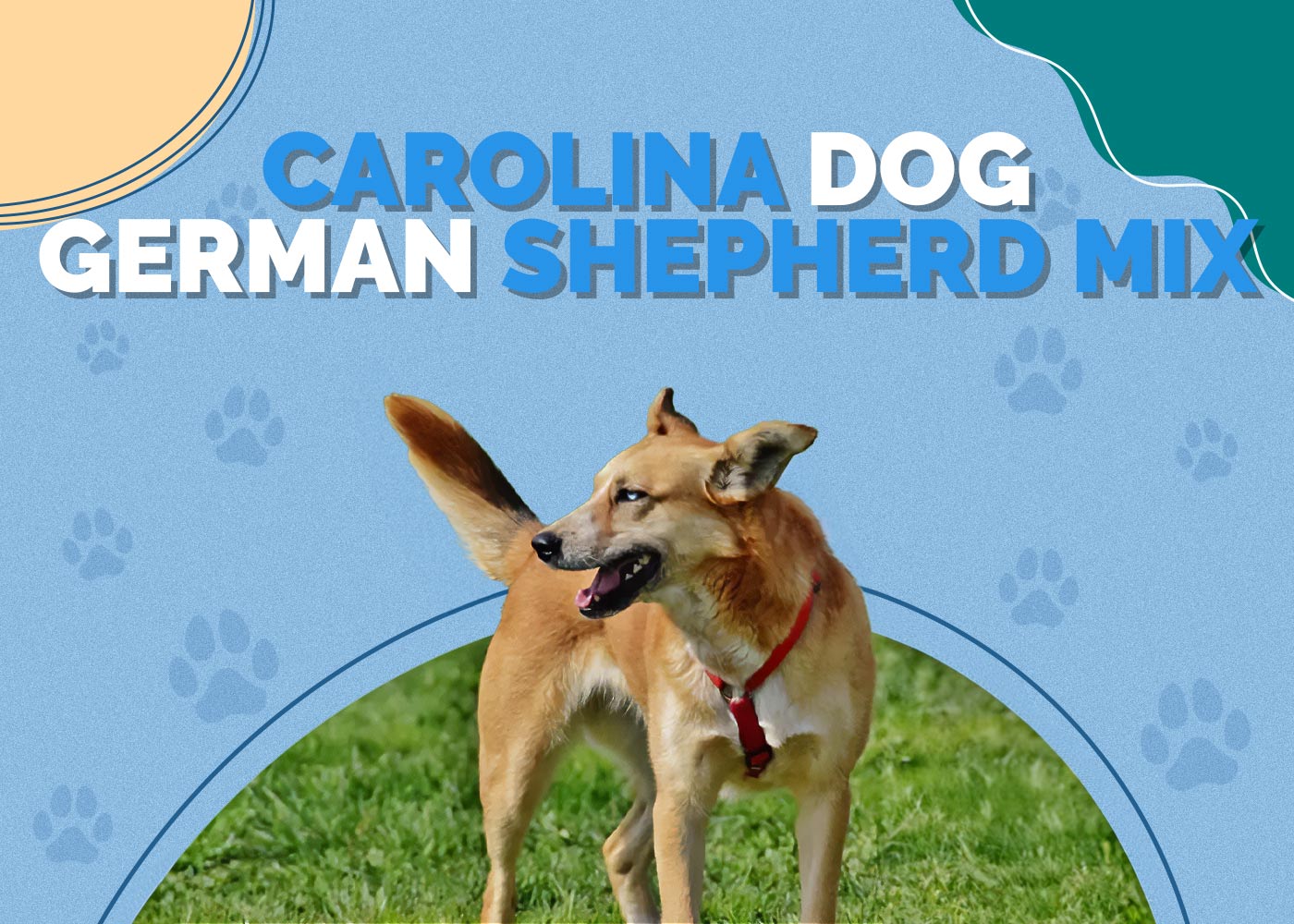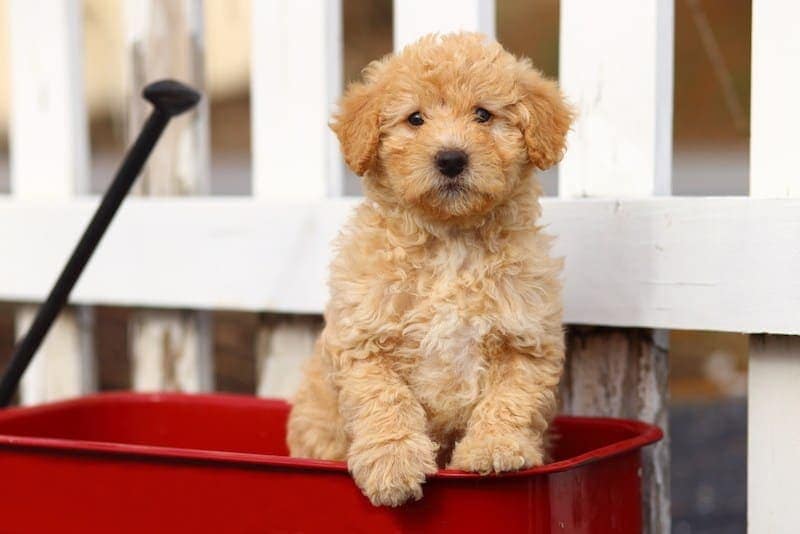Cane Corso vs. Bandog (Bandogge): Learn to Know the Difference
Updated on
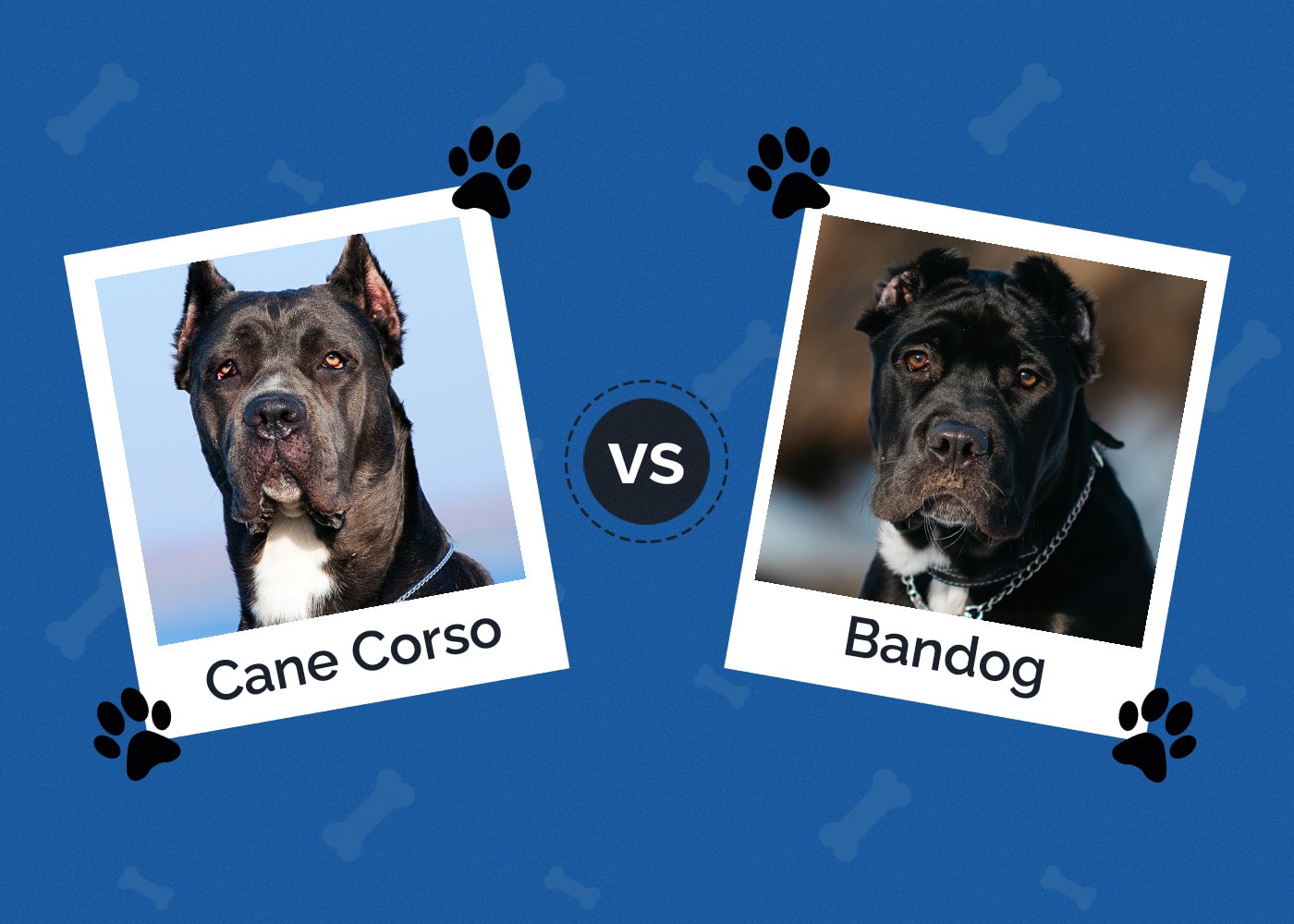
Interested in learning about the Cane Corso and Bandog? It’s tough because there isn’t much information on the Bandog to make a good comparison.
Both breeds are strong working dogs with a courageous history involving war and protection. They both need a job, are loyal, and are quite heavy. However, they are not the same breed. These dog breeds are in their own lane, so to speak. In fact, the Bandog isn’t even a breed in regard to the standard definition.
Still interested? Let’s do some digging to learn more.
Visual Differences
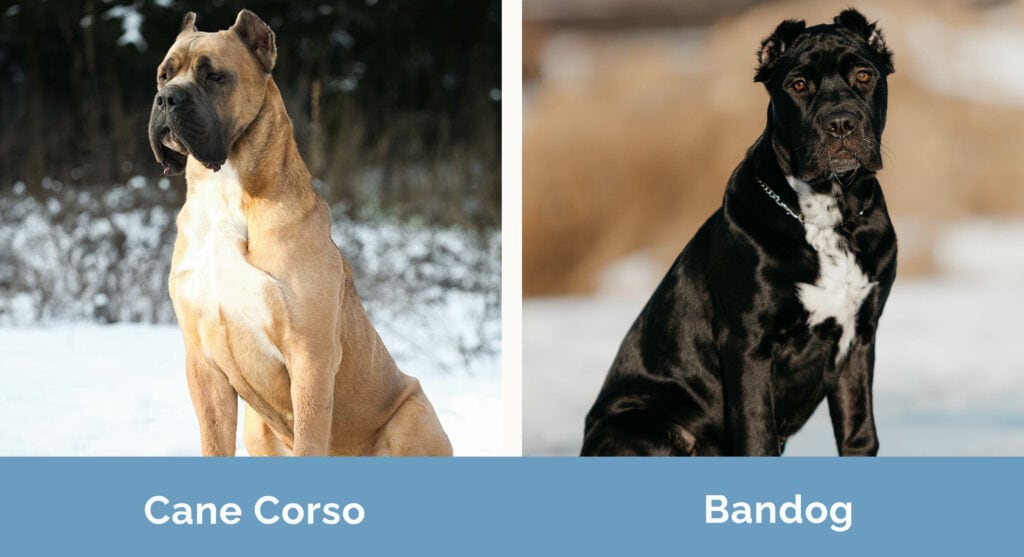
At a Glance
- Average height (adult): 5 inches
- Average weight (adult): 100 pounds
- Lifespan: 9–12 years
- Exercise: 1+ hours
- Grooming needs: Low to moderate
- Family-friendly: Yes (with supervision)
- Other pet-friendly: Yes (with supervision)
- Trainability: Easy
- Average height (adult): 25–30 inches
- Average weight (adult): 100–140 pounds
- Lifespan: 8 –12 years
- Exercise: 1+ hours
- Grooming needs: Low to moderate
- Family-friendly: Yes (with supervision)
- Other pet-friendly: Yes (with supervision)
- Trainability: Moderate
Cane Corso Overview
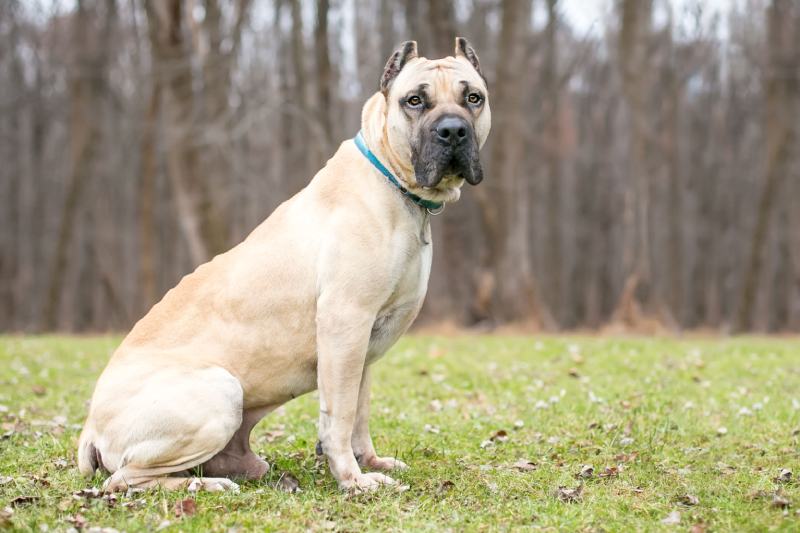
Upon first glance, the large muscular dog intimidates even the toughest of the tough. At almost 28 inches high and 100 pounds heavy, the infamous “bodyguard dog” easily towers over the average human standing.
However, after a few minutes alone with a Cane Corso, one would realize that this breed is more affectionate than it appears. Cane Corsos love to snuggle. Give them a few scratches and pets; these dogs will be your friend until the end of time.
But at their heart, Cane Corsos are guard dogs, thanks to their time in the Macedonian War.
The Roman War Dog
The idea of war scares most people, but the Cane Corso gladly took charge quite literally. During the Macedonian Wars in the 3rd and 2nd centuries BC, Roman soldiers brought the dog back to Rome and bred them to be used as “canis pugnaces,” or war dogs.
Cane Corsos were trained as piriferi, or “fire-bearers,” to charge the enemy carrying buckets of flaming oil on their backs. But after the Roman Empire fell in 476 AD, the Cane Corso no longer had an occupation. So, the farm life suited them well.
From War Zones to Green Acres
After the Macedonian War, Cane Corsos became working dogs for farmers. What else were people to do with these well-trained dogs lying around?
The Italian farmer and Cane Corso quickly formed a bond. Cane Corsos were fine with doing hard jobs on the farm. They protected hen houses from surrounding predators, distracted nursing pigs so farmers could gather piglets, and did other laborious tasks.
Sadly, once WWII hit, the Cane Corso almost vanished entirely. A few dogs lived in the surrounding Italian farmland, yet they were hardly seen. But during the 1970s, the Cane Corso experienced a revival.
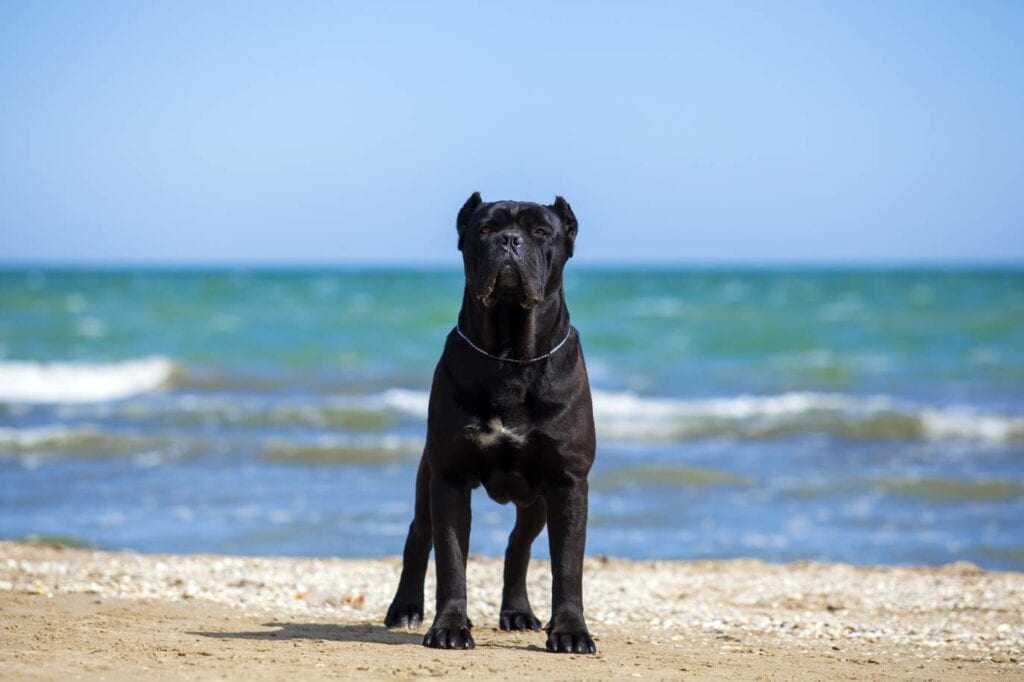
Exercise
Cane Corsos are highly active dogs and need space to run and play. Their mellow attitude allows them to do well in apartments and suburban areas, so long as they have a place to sprint.
This isn’t a breed you can leave outside with a ball. Cane Corsos love companionship and exercise best with other dogs and their owners. Long runs, dog sports, and long-distance fetch games are all excellent options for this breed.
Training
Despite their size and strength, Cane Corsos are sweet-spirited and don’t tolerate harsh punishments. However, they’re equally willful with a strong instinct to protect. They can end up owning the owner without proper training.
Early socialization and puppy training will ensure that you remain in charge and avoid unwanted confrontations down the road. Thankfully, Cane Corsos are eager to please, and, ultimately, are quite easy to train.
Grooming
Cane Corsos have short fur that sheds throughout the year in small amounts, so you won’t need to brush or bathe this breed much. About once per month will do. However, if you want to stay on top of the fur, use a medium bristle brush to comb out the dead fur before it can stick to the furniture.
Cane Corsos drool more often than other breeds, so you’ll need to wipe their mouth occasionally. Time the nails only when needed and brush their teeth at least once weekly to maintain good dental health.

Suitable for:
Cane Corsos do best in active families with experience raising dogs. This breed is big, strong, and willful without proper training. An inexperienced dog owner will struggle if they choose a Cane Corso as their first pet.
With that in mind, Cane Corsos are gentle and love to snuggle with their owners. They are just as sensitive as strong, so the ideal owner will be patient and willing to sacrifice to best suit the dog’s needs.
Bandog (Bandogge)
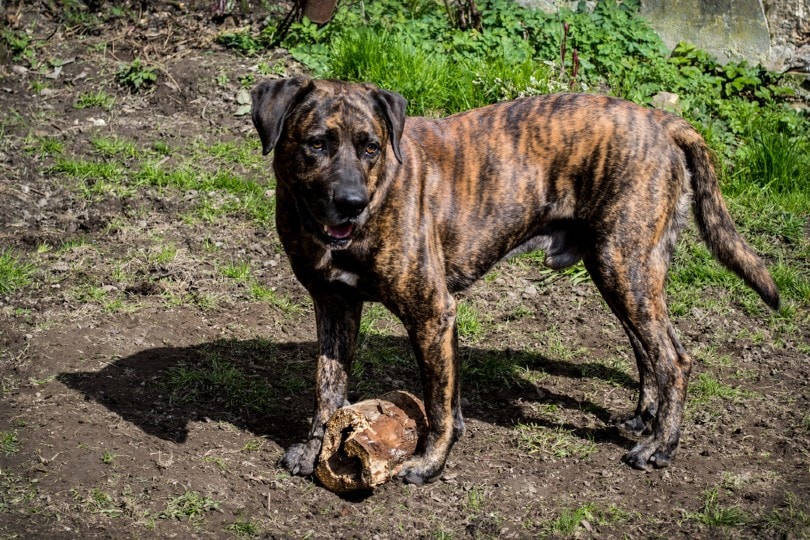
The Bandog isn’t a breed, exactly. Rather, it was a type of dog used to guard homesteads during a time when Kings and Queens ruled, Shakespeare’s masterpieces were still in the works, and blood was shed more ruthlessly compared to modern times.
Bandogs were typically Mastiff dogs mixed with other breeds known for their protective instincts. It’s possible the Cane Corso was part of the Bandog mix, but it’s difficult to say.
Modern breeders are working to recreate the dog into a separate breed known as the American Bandog. Bandogs now are Mastiffs mixed with Pit Bulls or English Bulldogs, resulting in a thick, muscular dog.
Exercise
Like the Cane Corso, Bandogs are usually active animals that need at least an hour of vigorous daily activity. However, this could vary from dog to dog since the Bandog is technically a mix.
You’ll have to observe your Bandog’s energy needs and make adjustments. Mastiffs tend to have moderate energy and suffice with long walks and simple ball play. On the other hand, Pit Bulls need long runs and distance ball play.
Ultimately, Bandogs are strong and playful, so be careful when playing with them to avoid injury.
Training
Unlike Cane Corsos, Bandogs are prone to a high prey drive, thanks to their Pit Bull genetics. They’re also stronger, so puppy training is a must.
Bandogs are guard dogs, so you can expect them to be more reactive than other breeds. Proper training will help your Bandog handle the world as is rather than react to everything it finds dangerous. Requiring your Bandog to “work” for everything is a good approach to training. Early socialization is vital to ensuring your dog is well-adapted to people and dogs of all appearances and personalities.
Grooming
Bandogs don’t have extensive grooming needs but will need their face wrinkles cleaned if they’re inherited from Mastiff genetics. Otherwise, dirt and grime will accumulate and cause irritation.
Bandogs may be prone to drooling, too. Brush and bathe their coats when needed, about once a month, and ensure their ears, nails, and teeth are clipped and cleaned regularly.

Suitable for:
Like the Cane Corso, Bandogs are for experienced dog owners who are active and willing to make sacrifices. These dogs are strong and require more training than other dog breeds.
Bandogs can do well around other pets and children with supervision, but their strength could hurt a small child or animal. With proper training, these hurdles could be conquered and a Bandog could live happily in a home with space to run and play.
Which Breed Is Right for You?
The Cane Corso and Bandog both require a dog owner who is attentive, active, and experienced with other active breeds.
Bandogs have a history, but there isn’t much documentation. It’s also a “breed” with little regulation and can be unpredictable regarding temperament and intelligence. In contrast, Cane Corsos are a regulated breed with professional breeders in abundance. You know what you’re getting when purchasing from a reputable breeder.
If you have an apartment, a Cane Corso will do fine if there’s a place to run and play. Bandogs may not do as well in this home setting.
No matter what, both dogs are excellent working dogs and love their owners diligently. They both require frequent companionship and are willing to go the extra mile to please their owners. It’s up to you to decide which breed is best for your home.
See also: Cane Corso vs German Shepherd: Which One Is Right for Me?
Featured Image Credit: (L) Sbolotova, Shutterstock | (R) Zilberbord Oksana, Shutterstock



